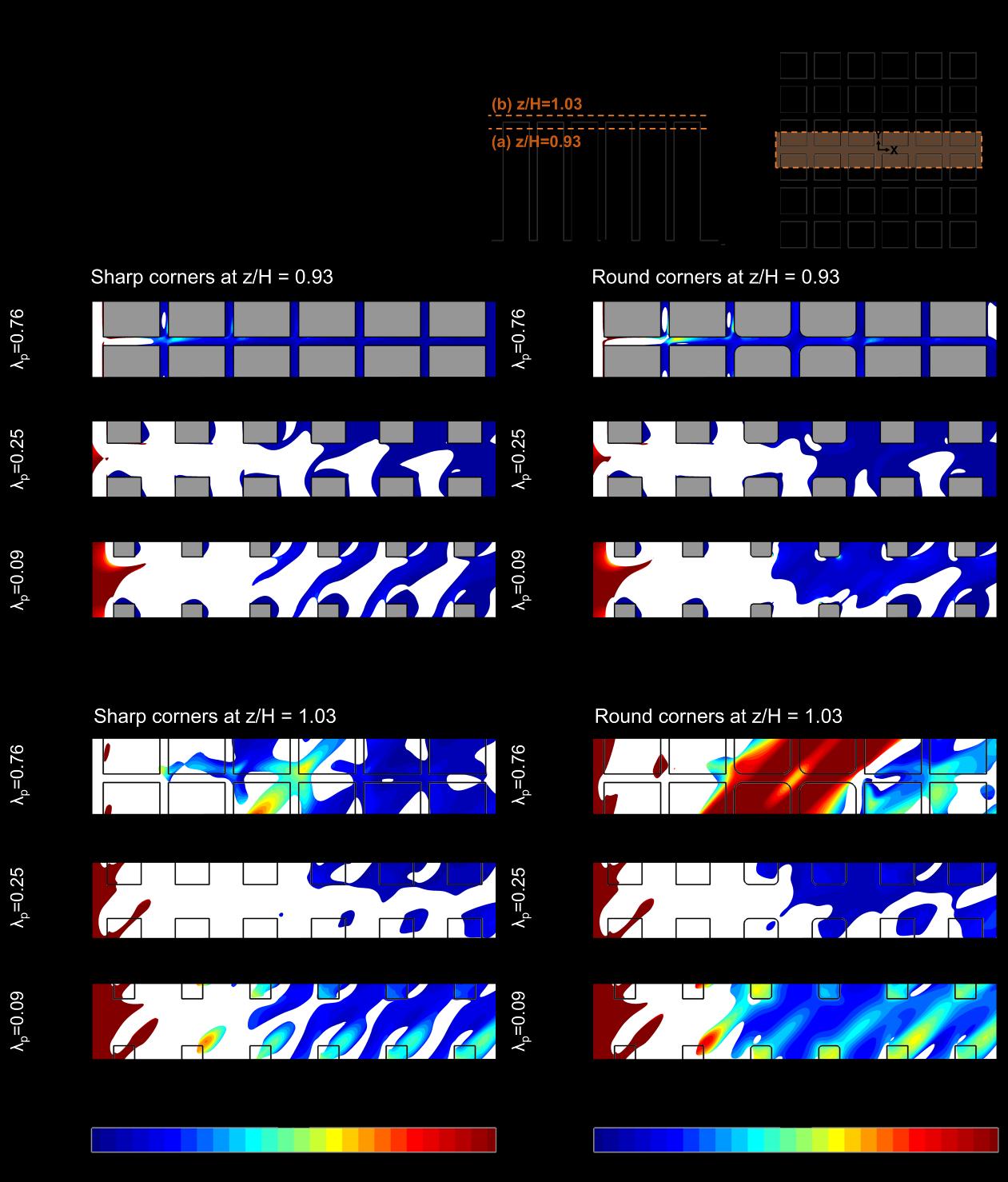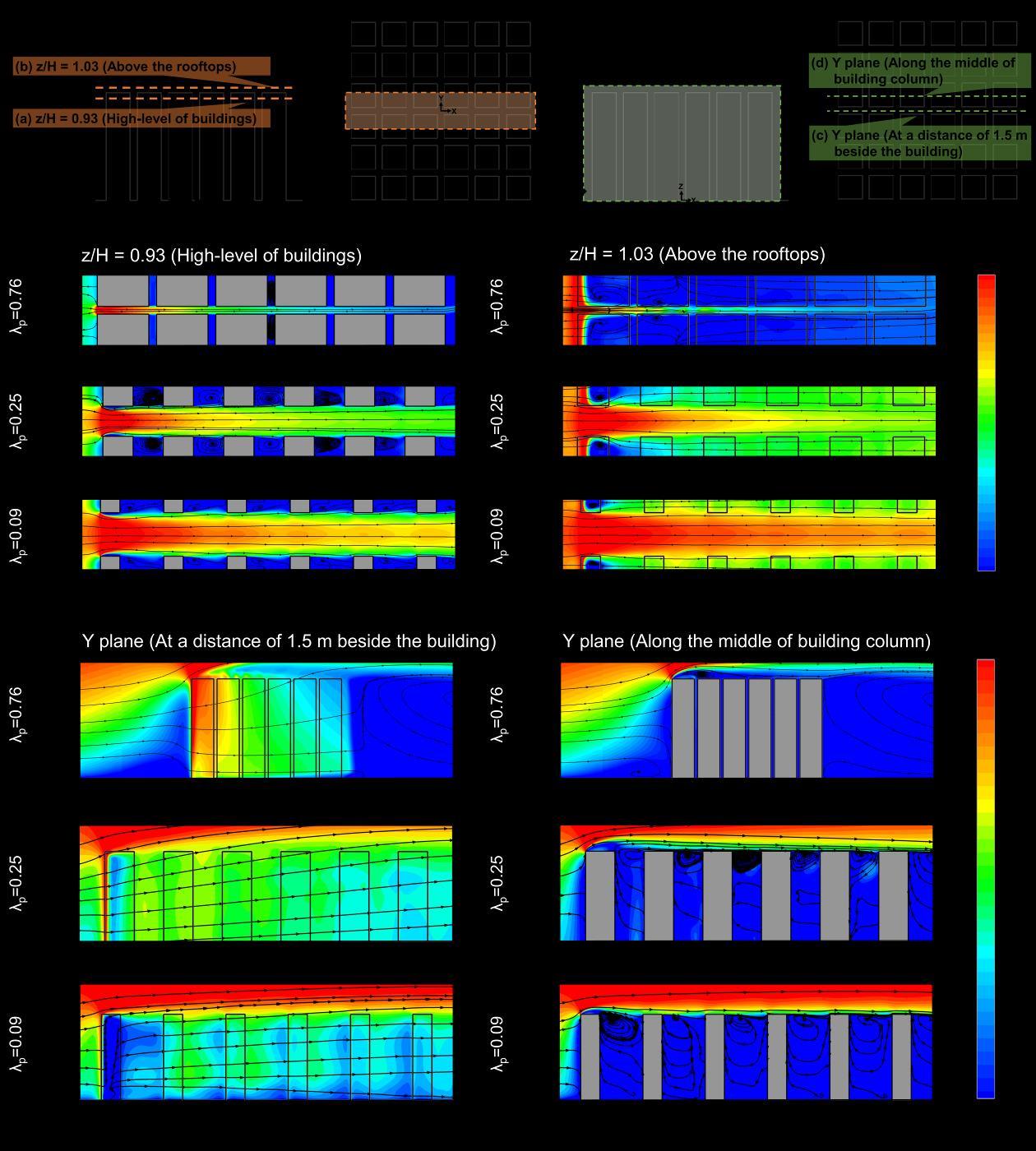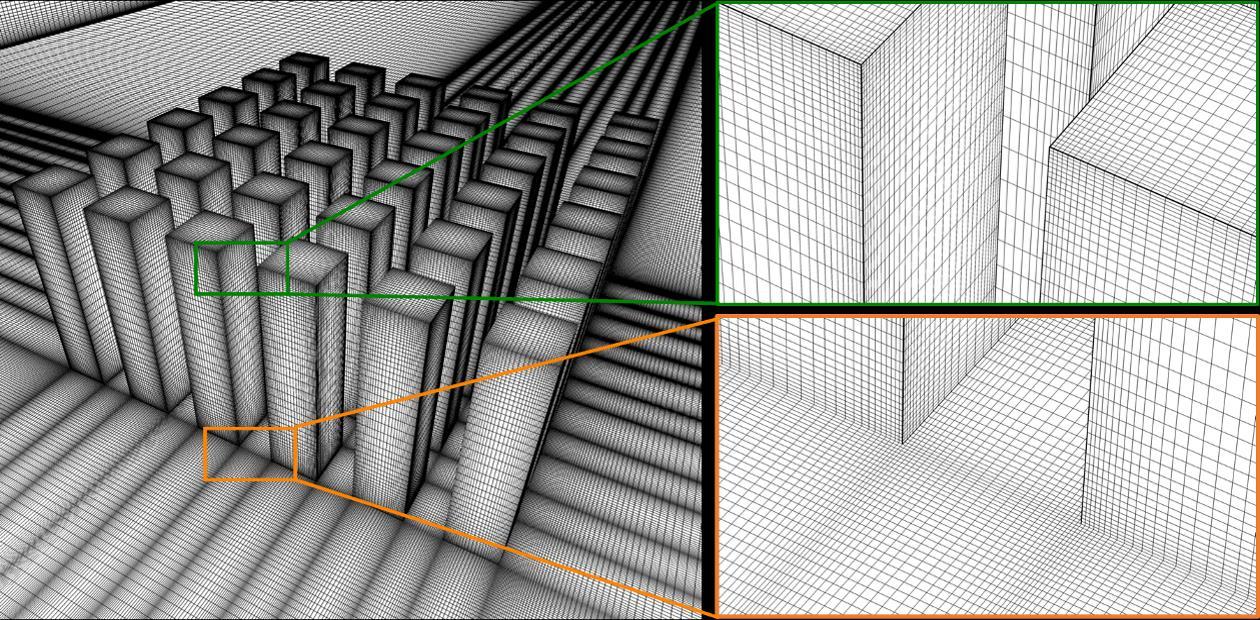
8 minute read
4.1 Introduction
66
Cs Roughness constant ɛ Turbulent dissipation rate H Building height H/W Building-height-to-street-width ratio Iref Reference turbulence intensity k Turbulent kinetic energy ks Sand-grain roughness height PD Power density PDref Reference power density RANS Reynolds-averaged Naiver-Stokes RSM Reynolds stress model TI Turbulence intensity TI Incident vertical profiles of turbulence intensity TIref Reference turbulence intensity at reference height H u Streamwise mean velocity component u Incident vertical profiles of streamwise mean velocity component U(z)ABL Mean inlet velocity of atmospheric boundary layer u * ABL ABL friction velocity Uref Reference wind speed uref Reference streamwise mean velocity component v Cross-stream velocity V Velocity magnitude Vref Reference velocity magnitude w Spanwise velocity W Gap width between buildings x, y, z Coordinates y* y plus
Advertisement
z0 Aerodynamic roughness length Chapter 4
Urban wind energy presents lots of interest through turbine installation in the urban environment, which can solve the transportation difficulties of electric transmission lines from the wind farms in remote locations to cities [4, 130]. However, the challenges are also caused by complicated interactions of turbulent wind flows and eddies with urban forms and structures [47, 131]. The urban morphology is usually directly related to the characteristics of urban environments, including the urban density and urban arrangement, and the geometry of buildings. Consequently, to maximize the urban wind energy potential for facilitating sustainable urban areas at the neighborhood and city scales, it is crucial to comprehend the detailed airflow patterns and turbulence characteristics around buildings in the urban configuration. Different flow regimes over street canyons determine the amounts of power density and turbulence intensity around high-rise buildings in urban areas, which are the essential parameters in estimating wind energy potential. Much attention has been devoted to investigating the relationship between the urban form and sustainability, pinpointing the implications of the shape and density of cities for future progression. Strong arguments from many studies suggest the compact city as the most sustainable urban form [132]. Urban density determines the compactness among buildings. It can be correlated with two indexes as (1) the urban plan area density (λp) (i.e., the ratio between the plan area of buildings viewed from above and the total floor area) and (2) frontal area density (λf) (i.e., the ratio of the frontal area of buildings to the total floor area). The building area and frontal
Urban wind energy potential: Impacts of urban density and layout 67
area densities are closely linked to the size and shape of buildings. High-rise buildings surrounded by narrow street networks can generally provide high wind speeds at higher altitudes but strong resistance to the approaching wind. In addition, the placement and urban layout design are of major significance. The in-line or staggered building arrangements are also crucial in determining whether it is profitable for turbine installation. Escalating urban airflows in high-rise compact urban areas may enhance the urban wind energy potential between the urban canopy layers and their surroundings. A study on the interactions of the turbulent wind flows with buildings in such urban areas can be very useful to formulate the guidelines of better urban wind power implementation strategies in urban planning. As an effective tool for the early-stage urban design and planning, computational fluid dynamics (CFD) simulations were conducted to achieve the parametric studies of outdoor wind environments affected by the urban morphology [45, 59]. It is embedded with errors, uncertainties, and modeling challenges as a wind assessment tool. Hence, it is important that the prediction capabilities need to be verified via the wind tunnel measurements [57, 58, 61] or onsite measurements [17, 18, 38] to ensure reasonable calculation accuracy. Existing investigations of urban morphology primarily focused on the comprehension of urban ventilation [133-136], pedestrian wind comfort [137-140], urban heat island [141, 142], energy consumption [143-145], air pollution [146-148] and wind load distribution [104, 149]. Urban wind energy potential has been a newly developing related topic in the past decade [8, 9, 150]. The parametric studies of generic urban configurations simplify actual complex urban geometries into generic simple morphological models, extensively used in the analyses of urban wind environments for their advantages of linking specific geometric parameters to urban wind energy outcomes. Blocken et al. [151] asserted the importance of validating CFD simulations against other high-quality measurement data to provide strong support to the use of CFD in the outdoor environment. However, most previous studies [36, 37] on urban wind power for the generic urban areas conduct wind tunnel measurements by using a single cube model, without validating the prediction accuracy. There is still a need for further examination of the performance of CFD validations in a building array where the wind field is much more complex than one or two buildings, especially for the case of high-rise buildings. In addition, only the accuracy of wind speed shows a good agreement between predicted CFD results and wind tunnel data [76, 79]. The accuracies of turbulence intensity or turbulence kinetic energy have not been widely discussed. When airflows close to complex urban areas are likely to be highly turbulent, and this also needs to be studied for its effect on wind turbine performance. In the study of urban wind energy potential, the turbulent models without proper validation of turbulence intensity can cause significant errors in power density estimation. Some earlier studies like Lu and Ip [78] and Ledo et al. [37] were focused on the influence of sharp roof shapes (i.e., pitched, pyramidal, and flat roofs) on the distributions of wind speed and turbulence intensity. Wang et al. [66] examined the configurations of two perpendicular buildings with different building dimensions, corner separation distances, and angles. Balduzzi et al. [75] investigated the effects of the installation building height, the height and width of its upwind building, and the distance between the buildings themselves on the flat or sloping roofs for five buildings. Millward-Hopkins et al. [76] proposed the effective access of the highest wind resource available for a uniform array by increasing the mounting height on the roof with further arranging the mounting point close to the leading edge. Heath et al. [79] analyzed the wind field around a simple pitched-roof building on a 6x4 cube array to determine the optimum mounting sites for varied prevailing wind directions. To extend the investigations to other shapes of aerodynamic modifications, Abohela et al. [36] explored the vaulted roofs with a better advantage over an isolated building than a 5x5 cube array. Toja-Silva et al. [59] performed a CFD analysis for various shapes to suggest a spherical roof with a cylindrical wall optimized for wind energy utilization. Zhou et al. [56]
68 Chapter 4
identified that the composite prism building shape has huge wind energy potential between two low-rise buildings.
Although the aforementioned findings have indicated better performance attained by modified urban morphologies for wind energy utilization around the buildings; however, most studies of urban wind energy potential have dealt with one cuboid [54, 55], or two parallel buildings [56, 62]. Only limited papers examined the wind field around cube arrays (i.e., the street aspect ratio of building height to street width, H/W= 1) [37, 59], or low-rise building arrays with H/W less than 2 [76]. Moreover, in view of urban density, most studies only tackled the mediumdense urban layout (λp = λf = 0.25). As exponential growth of high-rise buildings combined with massive urbanization, those high-rise densely populated cities like Hong Kong or the Manhattan district in New York, high-rise buildings are generally tall with relatively narrow streets with H/W commonly more than two or even up to 30 (as shown in Fig. 4.1). In this context, the urban density of compact high-rise cities can range up to λp = 0.76. In addition, only wind energy of the regular in-line urban layout has been examined without considering the scenario of staggered urban layouts, whereas the latter is more related to the diversity of actual complex urban areas. For the building corner modifications, the existing studies have only discussed the roof geometry effect on wind power potential, without modifying the shape of side building corner edges. For the assessment of possible wind turbine installation areas, a comprehensive study on the urban wind power estimation around the building array is still incomplete. Most researches probed the locations of turbine installation over the building roof [36, 75]. Some studies have reported other suitable mounting sites, such as the places along the passage between buildings [56, 62], beside the building [57], or directly integrated into the building [150]. Hence, the present study aims to address the above research gaps to complete a fundamental understanding of the influences of urban morphology in compact high-rise building arrays in a compact city on enhancing urban wind energy harvesting for sustainable urban development. In this perspective, the objectives of this study consist of the following tasks: 1) A regular 6×6 high-rise building array layout is set up as the object for full-scale CFD simulations. The urban density varies from a very compact urban layout (λp= 0.76 and λf= 3.4) to a sparse urban layout (λp= 0.09 and λf= 0.43), to quantitatively evaluate the effects of urban morphology variations on the wind power density and turbulence intensity. 2) The replacement of sharp corners with round corners is implemented for all building and roof edges of the center 2×2 high-rise buildings array to enhance wind energy potential as one of the effective aerodynamic modifications. 3) The CFD simulations are conducted to compare the wind power potentials around the staggered building layouts at varied urban densities with those around the regular in-line building layouts. 4) The wind energy resources for two incident wind directions θ= 0° and 45° are studied. 5) Two areas, including (i) beside the sidewalls of buildings and (ii) above the roofs for possible wind turbine installation, are selected to characterize the wind flow field around the building arrays at varied design parameters.






